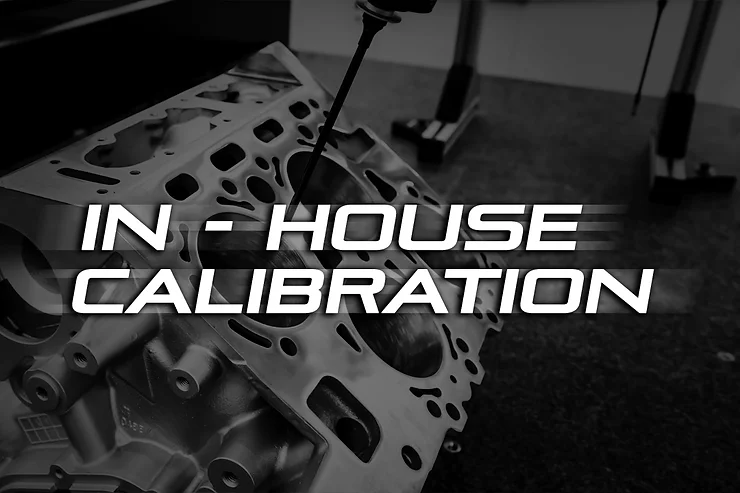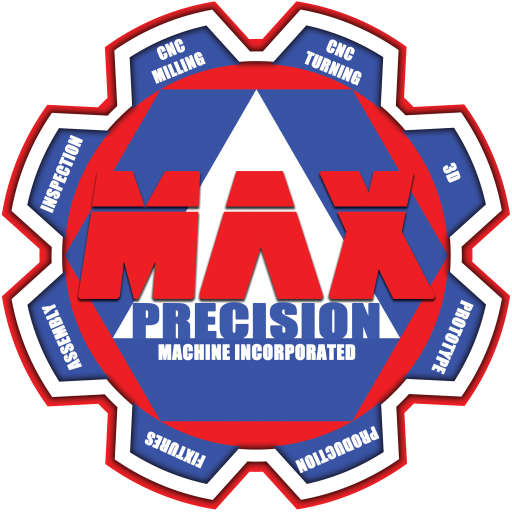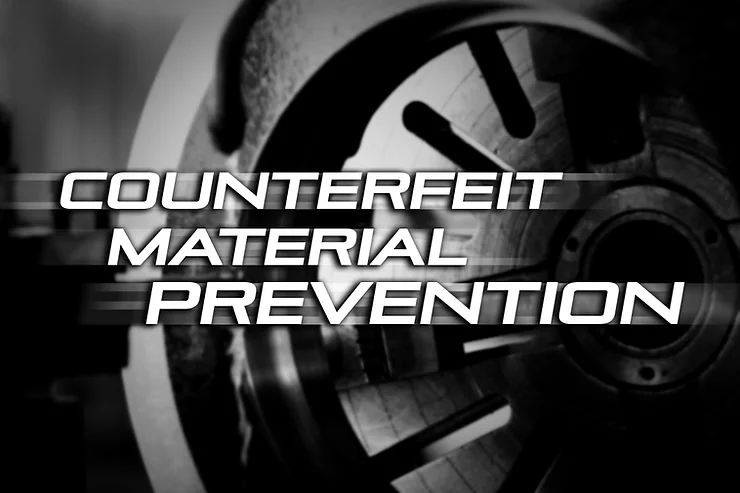In-house calibration

NIST attributability to confirm that outcome of the measurements is authentic.
1) Introduction
Instrumental calibration is essential and obligatory part of synchronized laboratories. The initial calibration process usually starts with options like outsourcing the service or managing it by ourselves. In order to sustain the quality service with less money and time, in-house calibration is widely executed.
Equipment of calibration that usually has the most accurate results while testing, the outcome of the samples consists of subsidiary equipment must be calibrated beforehand. This indicates that evaluating barometric attributability is essential for equipment. NIST makes sure the traceability directly through the system of units (SI) authentic outcomes while keeping the measurement outcome more reliable for the data analysis and research processes.
2) Benefits
The advantages of conducting in-house calibration are these.
-
Clients feel more secure in your supervised services.
-
A vast range of new capacities will be entertained in the measurement process.
-
Assistance is available at the required time.
-
Organized implementation of calibration under vigilant surveillance.
-
Non-compliance calibration can easily be identified; consequently, distorted factors can be quickly pinpointed for further analysis and displace the disputed one.
-
Another process is distinguished for further safety measures replaced by relinquish aspect.
-
Minimizes the vibrating threats and many other territorial hurdles with enhanced productivity.
3) Implementation hurdles
Areas follow:
-
It requires a sustainable package with multiple calibration procedures, which contain origination and preservation of calibration system, its certifications, the composition of client’s audit, its guidance is required in many other departments of the production firm.
-
This process also demands the model framework requiring amendments and calibrations on the provided calibration interim.
-
Competent and exclusive calibration staff are highly recommendable and continuously keep in touch with the latest training and knowledge.
-
It demands up to the mark facilities to get accurate results for in-house calibration and a proper grasp of natural circumstances and territorial effects.
4) In-house calibration
According to its own standards, in-house calibration procedures tend to have measuring instruments from the company or agency. The outcome of the base of metrological traceability creates a system in which their own standards do calibration through NIST or Calibration Measurement Capability (CMC). To get precise and reliable measurements depending on the requirements and expertise of the organization, the nature and extent of in-house calibration are determined. When metrological traceability is considered, then in-house calibrations approval is required, although not necessary. Following are the conditions that shall be fulfilled:
-
The calibration procedures should be recorded, the notes taken of the measurements should be kept for a fixed amount of time, and the results of calibration done should be submitted in the form of certificates.
-
Everything regarding calibration should be documented, e.g., the ability of a specific group of people taking part in calibration and their pieces of training and testimony. It must be kept in the form of exam and audit results in the calibration scale.
-
The calibration results of metrological traceability must be documented to international or national criteria.
-
There are uncertainties when estimated measurements come consistently, and this shall also be recorded. Also, when these measurements are reported, these uncertainties should be considered.
-
There should be participation in programs related to proficiency testing/ inter-laboratory differences.
-
To ensure the reliability of reference standards, they should be calibrated at fixed intervals. According to the reference standards, the processes and policies for altering and establishing these intervals should be monitored.
5) In-house calibration requirements
Overall standards set by the NIST according to ISO 17025 for every calculation framework which has proper examine apparatus, calibration criteria, described test systems, overall improved machinery for the barometric system is being given. Staff should be professionally trained and must have a comprehensive knowledge of calibration, evaluation, testing prerequisites, and the capacity to implement them.
These are the must-haves.
-
Circumstances for the execution. The industry itself makes sure, facilitates, and sustains the surrounding healthy for the performance of the process and to gain adherence to the work. Maintaining the in-house calibration is such a colossal task to conquer that only fulfills with the help of the best quality product; the territorial grip is also mandatory.
-
Extensive surveillance and calculating essentials. The industry should give the proper required financial assistance for focused outcomes while observance and analytical skills are implemented to ensure the availability of the commodity. Just like the expedients are given are appropriate for the specific type of observation and calculation being tackled. The industry must preserve authentic documentation as proof for measurement purposes.
-
Trackable measurement. While maintaining the measurement traceability to assure analytical outcomes, experimental apparatus should be calibrated or certified at specific interims or before use, opposite measurement objectives. The company should verify if the authenticity of the proceeding analyzing outcomes has been dangerous whenever the apparatus is considered to be outdated or damaged, should take action respectively. More importantly, we have some procedures ready to evaluate or revise the specific material whenever we suspect the hurdles coming in our calibration way.
6) Plan of action
The calibration process is a systemic procedure that gives an authentic way to analyze and establish the vital execution, specialties, or patience to evaluate the testing gadgets. Laboratories that contain calibration should develop separate adjustments for all the equipment. The authoritative individual shall properly audit the happenings to the credited calibration to mention which goal has been accomplished.
7) Quality control
It is used to measure the whole measurement of clients’ calibrating procedures. In the rough image, the fine monument is considered to transmit standards, which NIST usually analyzes. After that, bring to the client’s laboratory for another bunch of measurements. Transmit standards then give back to NIST for other sorts of measures combined with the operational data. NIST presents the logical data to clients and offers some suggestions and necessary guidelines as well to sustain the quality.
The accuracy of the calibrations is usually supervised with highly structured safety measures. Quantitative tricks are used to keep the data, gather the data, analyze it, and then visualize it with the standard measurements.
The results should be organized from the quality control by the authority as procedures are correlated into calibration system and systemic settings and interior evaluation. Some actions need to be taken here for increasing the quality of the calibration, but not just that:
-
Continues habit of using the right stuff or quality check.
-
Continues application of substitute equipment that has been properly calibrated to give trackable outcomes.
-
Effective use of general standards while measuring the data.
-
Recurrent intermediary inspects on measuring instrument.
-
Calibrations that require a standard deviation method or range method can be used in many ways.
-
Re-calibration and test again of those products which were previously preserved.
-
Combination of outcomes that may occur for many variants of an object.
-
Re-examine the analyzed data from the vigilant laboratory official.
The ideal measurement and processes for every criterion should be in quantitative control. Quantitative control is meant by the continuous assurance that the measurement procedures are well-developed pre-examined data is affirmably near to good numbers in the selected quantitative data horizon. When a system is in the process of the quantitative domain, good numbers are stable, and we can predict that the given calibration is undetermined and still reliable.
-
Cross-check requirements. In-house calibration is the most suitable and demanding procedure because it satisfies the explicit criteria under strict pre-developed and well-oriented situations. The conditions are correctly distinguished, sustained, and quantitatively balanced. Every calibration is organized and well-scripted to get continuous facilitation with time. One specific assessment is designed for these purposes.
-
A particular sort of calibration is scarcely demanded, so preventing to keep the record of many quantitative data under the measuring process.
-
The critical assessment is incredible.
-
This facility is under surveillance yet that describes that the calibration standard is perfect yet, documents of cross-checking have still not been achieved.
8) Traceability
It is compulsory for registered firms to ensure the trackability measures by maintaining the data that indicates that their own instruments have been calibrated from the testing laboratories. The reason behind demanding traceability is to ensure that the measurements’ outcomes are the actual figure of the required item while remaining in the undetermined measurement.
NIST presents the calibration outcomes, according to the measurement values established by the unplanned procedures, the territorial environment at NIST. Calibration members make their own measurements according to calibrated equipment or the subtle monument. Moreover, the undescribed surrounding highlighted by NIST is fully managed and documented.
In order to conduct the trial audit for the traceability, organized calibration outcomes shall contain: the determined value, describe uncertain conditions, mention the general standard in the calibration process, to highlight the environmental situations where amendment factor must be used while calibrating when any standardized instrument was to be implemented under various natural elements.
9) Metrological traceability
Metrological traceability is the attribute of the measurement outcome where the results can be easily attached to exemplary data with the series of calibration; every calibration is undescribed. The difference between any two general measurement standards can be seen as calibration if it is under surveillance and, if needed, adjust the quantity and calculation uncertainly. There are some rules:
-
Measurement units and scales. To compare the measurement results, their results must be expressed in the same units. When measurements results are achieved, they are given multiple units to be reached. These results are evaluated according to the measurements standards then, in turn, are adjusted against other measures. Doing this process forms a chain of events that eventually leads to the primary unit or realization of a particular unit. The leading role of metrological traceability is to give consistent calibration units via measuring standards. Without the measuring means, there is no logical measurement.
-
Calibration. It is the process in which the values demonstrated by the system or instrument and the values determined by measuring standards establish the link between them. This process then brings us one step closer to achieving metrological traceability. To achieve metrological traceability, a proper measurement standard is accomplished through calibration.
-
Effects on measurement results. Under specified conditions, any measurement is considered, a combination of one or two evaluations to give a mark. If these conditions are altered, then the value of the result will also be changed. So, it is essential to first assess the fixed measurement rules, and then control of the variable parameters will come along gradually.
-
Controlling Fixed condition. From meteorological traceability to universal measurement, laboratories can use standards to get the same set of fixed conditions for experiments. This is also possible when measurement conditions are required to vary in a certain way.
-
Process of development. In developing methods, some things are produced, such as a procedure in which measurement standards are operated, a fixed set of conditions to carry a measurement, defining which set of values must be kept constant, and an equation through the importance of measured parameters are calculated. The evaluations will be consistent if all the values of these parameters are acceptable by references.
-
Validation methods. There are methods from which the procedure is tested to determine whether it is well defined and achieves all the necessary traceability requirements. These methods are described as validation methods. When the procedure is gone through these methods and does not find any errors, then it is used without any changes and is considered valid. For the base of the measurements, these guidelines are approved. Then it is safe to consider that all the conditions are met, which can achieve metrological traceability. Except for these effects, there are no studied effects. The process is expected to produce consistent results if all the conditions are traceable to appropriate references.
-
Uncertainty and Traceability. The reference values can be uncertain, and the values provided by the measurement process can be from different causes or random disparity and, in turn, gives uncertainty in results. These uncertain measurements can be useful if all the required conditions are applied and known references have uncertainty on them.
a. Trackable to NIST. NIST ensures the best calibration services that are very well-identified, sustainable, and trustable measurement procedures. NIST provides the facility to calibrate the metrologically trustable gadgets as a reference or o transmit standards. NIST has a very precise strategy of traceability mentioned below:
-
Metrological traceability introduces to the SI or to another type of standardization. Its own research results are given to clients through NIST calibrations certifications, reference stuff, and many other measurement facilities that deal with the NIST quality assurance framework for the purpose of measurement.
-
Acknowledges that the supplier of the measuring system has to give the facility to get the metrological traceability even if that provision is from NIST or any other organization. The authenticity of the claim of the provider of wholly their responsibility.
-
It clearly shows that NIST can’t define or verify metrological traceability outcomes of the measurements apart from what the NIST itself delivers.
-
Focuses on traceability alone will not indicate or ensure suitability because this needs the undescribed measurable results.
-
The supplier of the measurement outcome is totally accountable for traceability. In that situation, the supplier is from NIST or any other agency.
-
The provider should document measurement procedures and undescribed estimations to establish that a series of calibrations were being used to initiate the specific reference.
-
Outcomes of the measurements must be well scripted
-
The outcome of the measurement is reliable on the assessment of the valid statement of traceability.
b. Traceability chain. The sequence of metrological traceability and calibrations refers to the outcome of the measurement. Demonstration of the traceability series shall contain the estimations that create the connections. The below projection presents the graphical image of the NIST’s traceability series of reference systems. Plain series of standard reference instruments are stated below. Metrological traceability can be achieved by calibrating through a structured approach that gives the verified figure of the measurement. Nevertheless, the verified formation of traceability series consists of at least more than one connection apart from the calibration materials. It cannot offer the smallest possible finding.

Figure. Metrological traceability outcomes by NIST standard reference instrument (SRI)
Note. Consideration. The calibration pattern clearly shows in the arrows above; the angle of arrows represents the heritage passage. NIST clarifies that measurement outcomes given by the SRI can be traceable to a high-order reference system where the measurement equipment is sustained and facilitated by the directions of NIST. The client’s verdict is true to develop traceability by referencing that the SRI is fully executed and sustained.
c. Importance of metrological traceability. We assure that multinational steadiness and correspondence of measurements are needed if the goals of the institutions are being fulfilled. Specifically, measurement correspondence is an important attribute of the multinational arena where measurement outcomes are considered to be generally applicable. That multinational continuity and steadiness are only fulfilled when the measurement outcomes are fully metrological traceable and logical to the universally admitted references. As a whole, references that are universally registered are from the international system of the units. When this sort of traceability is not accessible, measuring outcomes shall be traceable to the documented references or results.
10) Metrological reliability
Validity is considered to be the capacity of a product to demonstrate a certain requirement under the described situations within the chosen time frame. Metrological reliability has been explicitly developed as the indicator of metrological hurdles on reliable assessment techniques. It also describes the reliability of the knowledge of the measurement while implementing the strategies of the metrological reliability where metrological drawbacks have been taken seriously and carefully concentrate on the drawback’s ratio, according to the definition of the metrological reliability, the entity which contains the measurement software established under the values of metrological attributes within a certain time frame while remaining in the normal environment and implementing situations. The basic reasons for the failure are errored sensors and proper activation of the components. At the same time, I am leaning towards legal metrology, where a measuring gadget is assessed with observance of standardized measurement with undescribed compositions. The reliability analysis procedure is just like an emitter gadget without any proper act, and metrological aspects are fully concentrated. Prerequisites of metrological aspects contain the reliability tests with the required assessment parameters that surely defects the effective actions of the non-measuring items. Whenever the validity of the item is observed with the in-dept framework, where measurements outcomes are effectively generated under the metrological criteria, authentic knowledge is gained through it. A capable person usually names that position. Metrological reliability is such a balanced and geographical agenda that indicates the reliability and also demonstrates it under the possible scale where the specific device can easily evaluate the reliability factor properly.
11) The aftermath of metrological traceability on the international market.
Traceability of measurement outcomes can easily achieve the reliability, clarity, exchangeable need for the current evolving international market. In order to deliver the standardized equipment, agencies put their trust in the valid and persistent measurement that can easily be traceable to the registered measurement system as well as the international system of units.
12) Accreditation
Accreditation is the process by which a laboratory’s competence to perform calibrations is confirmed by an independent third party. Accreditation is granted by independent recognised authorities such as the NIST to demonstrate that the calibration lab adheres to sound metrological traceability principles and has the necessary equipment, procedures, and technical expertise to provide accurate measurement results. Overall, the requirements must be implemented, documented, and kept up to date. The laboratory is accredited after demonstrating that all requirements have been met, and it is authorized to issue accredited calibration reports and certificates. The lab is audited on an annual basis to ensure continued compliance.
13) Conclusion
In-house calibration is the unpreventable approach of internalizing the advancement and modification of the laboratory. Such testing institutes must drastically modify the management of the calibration technology, identify the hurdle and rectify it over a short period. The measurement traceability should be obtained by balanced comparing significant standards with appropriate processes and measurement unpredictability. That’s why testing laboratories should consistently brush up on the in-house calibration procedure and ensure the valid and statistical measurement to bring out the best work more efficiently and accurately to ensure the metrological traceability of the statistical value for the testing equipment.
Reference
-
SO/IEC 17025:2017 General requirements for the competence of testing and calibration
-
laboratories. International Organization for Standardization. Geneva (2017).
-
Marshall, J. L. (1998). NIST calibration services users guide 1998. https://doi.org/10.6028/nist.sp.250e1998
-
Choquette SJ, Duewer DL, Sharpless KE. NIST Reference Materials: Utility and Future. Ann Rev Anal Chem 2020;13(1):453-474. https://doi.org/10.1146/annurev-anchem-061318-115314.
-
Beauchamp, C. R., Camara, J. E., Carney, J., Choquette, S. J., Cole, K. D., DeRose, P. C., Duewer, D. L., Epstein, M. S., Kline, M. C., Lippa, K. A., Lucon, E., Phinney, K. W., Polakoski, M., Possolo, A., Sharpless, K. E., & Sieber, J. R. (2020). Metrological tools for the reference materials and reference instruments of the NIST material measurement laboratory. https://doi.org/10.6028/nist.sp.260-136-2020
-
French College of Metrology. (2013). Metrology in Industry: The key for quality. John Wiley & Sons.
-
NIST policy on metrological traceability. (2021, October 25). NIST. https://www.nist.gov/calibrations/traceability
-
Comité International des Poids et Mesures (CIPM) (1999) Mutual Recognition of National Measurement Standards and of Calibration and Measurement Certificates Issued by National Metrology Institutes (Bureau International des Poids et Mesures (BIPM), Pavillon de Breteuil, Sèvres, France). Technical Supplement revised in October 2003 Available at www.bipm.org/en/cipm-mra/.





